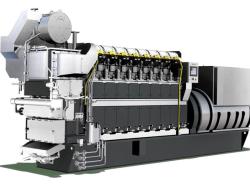
OR WAIT null SECS
© 2024 MJH Life Sciences™ and Turbomachinery Magazine. All rights reserved.
Accumulators: Definition and operation
An accumulator is simply a vessel which compensates for rapid shirt term flow disturbances in the auxiliary system. Most accumulators contain bladders. It is important to remember that transient disturbances are often of the order of micro seconds, and usually less than five seconds in duration.
The pre -charge pressure is set at the pressure that the volume of the accumulator flow is required in the system. (This value is usually around 60-70% of the normal header pressure in which the accumulator is installed) The quantity of oil available from a pre-charged accumulator is extremely low.
As an example, consider a system with the a flow capacity of 120 GPM, which has a motor driven auxiliary pump that requires three seconds to attain full speed when started by a pressure switch or transmitter at 140 PSIG. Normal header pressure equals 160 PSIG. Determine the amount oil that is required to prevent the pump header pressure from falling below 100 PSIG, and the number of pre-charged 10 gallon accumulators required.
Accumulators are often improperly sized because of the misconception that its stated size is in fact the capacity contained therein. The actual capacity in any accumulator is equal to the internal volume minus the gas volume over the liquid volume. Typically these values are 50% of the stated capacity or less.
Concerning accumulators, checks should be made when unit is shut down for accumulator bladder condition if supplied with bladders. One area which can cause significant problems in auxiliary systems is accumulators that are supplied with a continuous charge‑ that is, charge lines (nitrogen or air) which come directly from a plant utility system. Any rupture of a diaphragm will provide a means for entry of charge gas directly into the lube system. Most plant utility lines contains pipe scale that could easily plug systems and cause significant equipment damage.
In addition, the following reliability factors should be noted:
- Be sure to install a check valve upstream of the accumulators to ensure all accumulator to ensure all accumulator oil is delivered to the desired components.
- Accumulators should be checked periodically (monthly) for proper pre-charge and bladder condition by isolating and draining the accumulator. Note that the accumulator pre-charge pressure cannot be determined while on line.
- When refilling the accumulators, care must be taken not to suddenly open the supply valve. Best practice is to install an orificed bypass valve to be used for filling the accumulator.
- Best practice is also to install two (2) full size accumulators to ensure that one accumulator is always on line during monthly checks.


